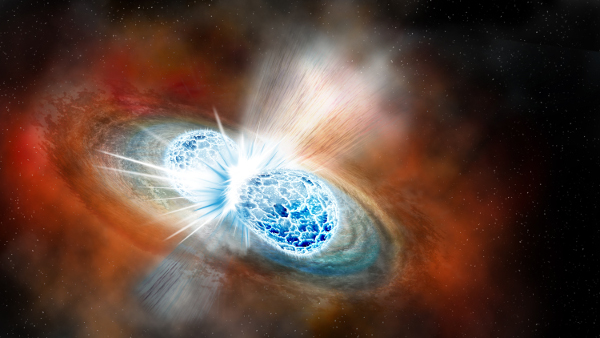Flash in the sky

Assistant professor of astronomy Ryan Foley was enjoying an afternoon off in Copenhagen when a student texted him. LIGO, the Laser-Interferometer Gravitational Wave Observatory—which had previously detected ripples in the fabric of space-time for the first time, garnering fanfare and a Nobel Prize—had found another gravitational-wave signal.
This time, the signal likely came from merging neutron stars—exotic, city-sized objects with the mass of one or two suns. And unlike previous detections, this cosmic crash was expected to light up.
Astronomers around the world raced to find that flash of light. Just 17 minutes into their search using the Swope Telescope at the Carnegie Institution’s Las Campanas Observatory in Chile, Foley and his team found it: a bright dot in a galaxy 130 million light-years away. Their and others’ observations were quickly published in multiple papers in Science, Nature, and Astrophysical Journal Letters.
It was the first time anyone measured the light from an event that also produced gravitational waves. The observations revealed that these mergers could have produced most of the elements heavier than iron in the universe. This kind of measurement also provides a new way to probe the expansion rate of the cosmos—crucial for understanding deep questions like the nature of dark energy, Foley said. “It’s really just the beginning of a new scientific field.”

